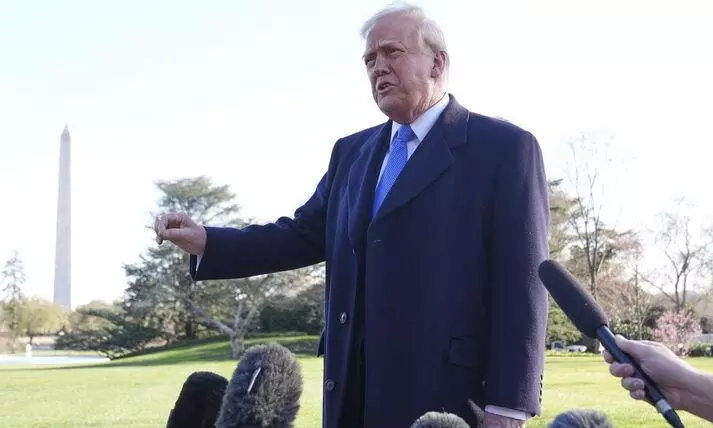
Trump eyes third term; can a 'loophole' in US law aid his ambitions?
US President Trump says he's “not joking” about a third term, raising questions around a possible loophole in the 22nd Amendment and succession tricks

Donald Trump’s second term has only just begun, but he has already started teasing the prospect of seeking a third. On Sunday (March 30), Trump dropped his boldest hint yet about trying for a third presidential term, saying he was “not joking” about continuing beyond 2029. This despite the 22nd Amendment which restricts any US President from being elected more than twice.
Speaking to NBC News, Trump claimed: “I have had more people ask me to have a third term, which in a way is a fourth term because the other election, the 2020 election, was totally rigged.” He later added, “I don’t want to talk about a third term now... but there are methods you could do it.”
Also Read: Trump’s order to overhaul US elections likely to face legal hurdles, backlash
What is the 22nd Amendment?
President Franklin Delano Roosevelt's unprecedented four terms prompted Republicans in Congress to push for a constitutional amendment to formalise presidential term limits – a tradition originally set by George Washington, who voluntarily stepped down after two terms, although some later presidents had attempted to serve longer.
Ratified in 1951, the 22nd Amendment was introduced after Franklin D Roosevelt was elected four times in a row. It states: “No person shall be elected to the office of the President more than twice.”
Trump’s 'loophole' strategy
The 22nd Amendment limits a president to two elected terms but does not explicitly bar them from serving as vice president. The law, however, states that anyone “constitutionally ineligible” for the presidency cannot be vice president.
It also doesn't mention anything about becoming president on an additional occasion through succession. After the end of Trump’s second term, if he runs as a vice-presidential candidate and his running mate resigns, he could become president for the third time.
So, Trump might plan to have Vice President JD Vance, 40, run for president with Trump as his vice president. Vance would then resign to allow Trump to regain the top job.
This loophole theory depends on how courts interpret the 12th Amendment, which prohibits anyone “constitutionally ineligible” for the presidency from becoming VP. Whether that includes a two-term President is still a matter of debate.
Also Read: Trump administration asks SC to partly allow birthright citizenship restrictions
Could Obama or Clinton try the same?
The current debate specifically revolves around presidents with non-consecutive terms – which is rare. Trump is only the second president in US history to serve non-consecutive terms after Grover Cleveland in 1893
That’s why, when Tennessee Congressman Andy Ogles introduced a resolution earlier this year to modify the 22nd Amendment for Trump’s sake, he included a clause allowing only non-consecutive term holders to run again.
That effectively rules out Barack Obama and Bill Clinton, who each served two consecutive terms.
Also Read: Trump’s new social media policy spells trouble for Indian green card holders
What about India?
While Americans debate over term limits, India has no such restriction for its prime ministers. There’s no cap on the number of terms or a maximum age to hold the office.
From Jawaharlal Nehru to Narendra Modi, Indian prime ministers have served for as long as the people and their parties support them. As long as they remain elected members of Parliament and enjoy majority backing, they can keep returning.
Trump’s third-term trial venture might never take off – but it has once again thrown open deep questions about democracy, ambition, and constitutional interpretation.

